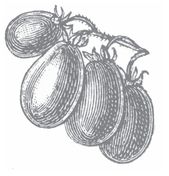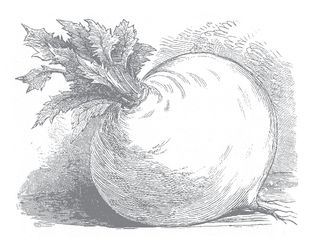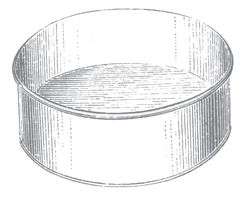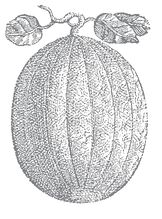Food Rules (4 page)
Authors: Michael Pollan

Bogus health claims and faulty food science have made supermarkets particularly treacherous places to shop for real food, which suggests the next two rules.
12
Shop the peripheries of the supermarket and stay out of the middle.
Most supermarkets are laid out the same way: Processed food products dominate the center aisles of the store, while the cases of mostly fresh food—produce, meat and fish, dairy—line the walls. If you keep to the edges of the store you’ll be much more likely to wind up with real food in your shopping cart. This strategy is not foolproof, however, since things like high-fructose corn syrup have crept into the dairy case under the cover of flavored yogurts and the like.

13
Eat only foods that will eventually rot.
What does it mean for food to “go bad”? It usually means that the fungi and bacteria and insects and rodents with whom we compete for nutrients and calories have gotten to it before we did. Food processing began as a way to extend the shelf life of food by protecting it from these competitors. This is often accomplished by making the food less appealing to them, by removing nutrients from it that attract competitors, or by removing other nutrients likely to turn rancid, like omega-3 fatty acids. The more processed a food is, the longer the shelf life, and the less nutritious it typically is. Real food is alive—and therefore it should eventually die. (There are a few exceptions to this rule: For example, honey has a shelf life measured in centuries.) Note: Most of the immortal foodlike substances in the supermarket are found in the middle aisles.

14
Eat foods made from ingredients that you can picture in their raw state or growing in nature.
Read the ingredients on a package of Twink-Ries or Pringles and imagine what those ingredients actually look like raw or in the places where they grow: You can’t do it. This rule will keep all sorts of chemicals and foodlike substances out of your diet.

15
Get out of the supermarket whenever you can.
You won’t find any high-fructose corn syrup at the farmers’ market. You also won’t find any elaborately processed food products, any packages with long lists of unpronounceable ingredients or dubious health claims, anything microwaveable, or, perhaps best of all, any old food from far away. What you will find are fresh, whole foods harvested at the peak of their taste and nutritional quality—precisely the kind your great-grandmother, or even your Neolithic ancestors, would easily recognize as food. The kind that is alive and eventually will rot.

16
Buy your snacks at the farmers’ market.
You’ll find yourself snacking on fresh or dried fruits and nuts—real food—rather than chips and sweets.

17
Eat only foods that have been cooked by humans.
If you’re going to let others cook for you, you’re much better off if they are other humans, rather than corporations. In general, corporations cook with too much salt, fat, and sugar, as well as with preservatives, colorings, and other biological novelties. They also aim for immortality in their food products. Note: While it is true that professional chefs are generally humans, they often cook with large amounts of salt, fat, and sugar too, so treat restaurant meals as special occasions.
Following are a few useful variants on the human-cooked-food rule.

18
Don’t ingest foods made in places where everyone is required to wear a surgical cap.
.

19
If it came from a plant, eat it; if it was made in a plant, don’t.
.

20
It’s not food if it arrived through the window of your car.
.

21
It’s not food if it’s called by the same name in every language. (Think Big Mac, Cheetos, or Pringles.)
.
PART II
What
kind
of food should I eat?
kind
of food should I eat?

(Mostly plants.)
If you follow the rules offered thus far you will be eating real, whole food most of the time—the simple key to a healthy diet. Beyond that, you have a great many options. One lesson that can be drawn from the striking diversity of traditional diets people have lived on around the world is that it is possible to nourish ourselves from an astonishing range of foods—so long as they really are foods. There have been, and can be, healthy high-fat and healthy low-fat diets, but they have always been diets built around whole foods. Yet there are some whole foods that are better for us than others, and some ways of producing them and then combining them in meals that can make a difference. So the rules in this section propose a handful of personal policies regarding what to eat, above and beyond “food.”
Other books
Flux by Orson Scott Card
Salt by Danielle Ellison
Amuse Bouche by Anthony Bidulka
RUTHLESS HOLD (A Back Down Devil MC Romance Novel) by London Casey, Karolyn James
Bride of Fae (Tethers) by Rigel, LK
Tomorrow Land by Mari Mancusi
Trouble In Bloom by Heather Webber
Voyage of the Basilisk : A Memoir by Lady Trent (9781429956369) by Brennan, Marie
A Few More Nights (Slice of Life) by Gaines, Olivia
All's Well That Ends by Gillian Roberts